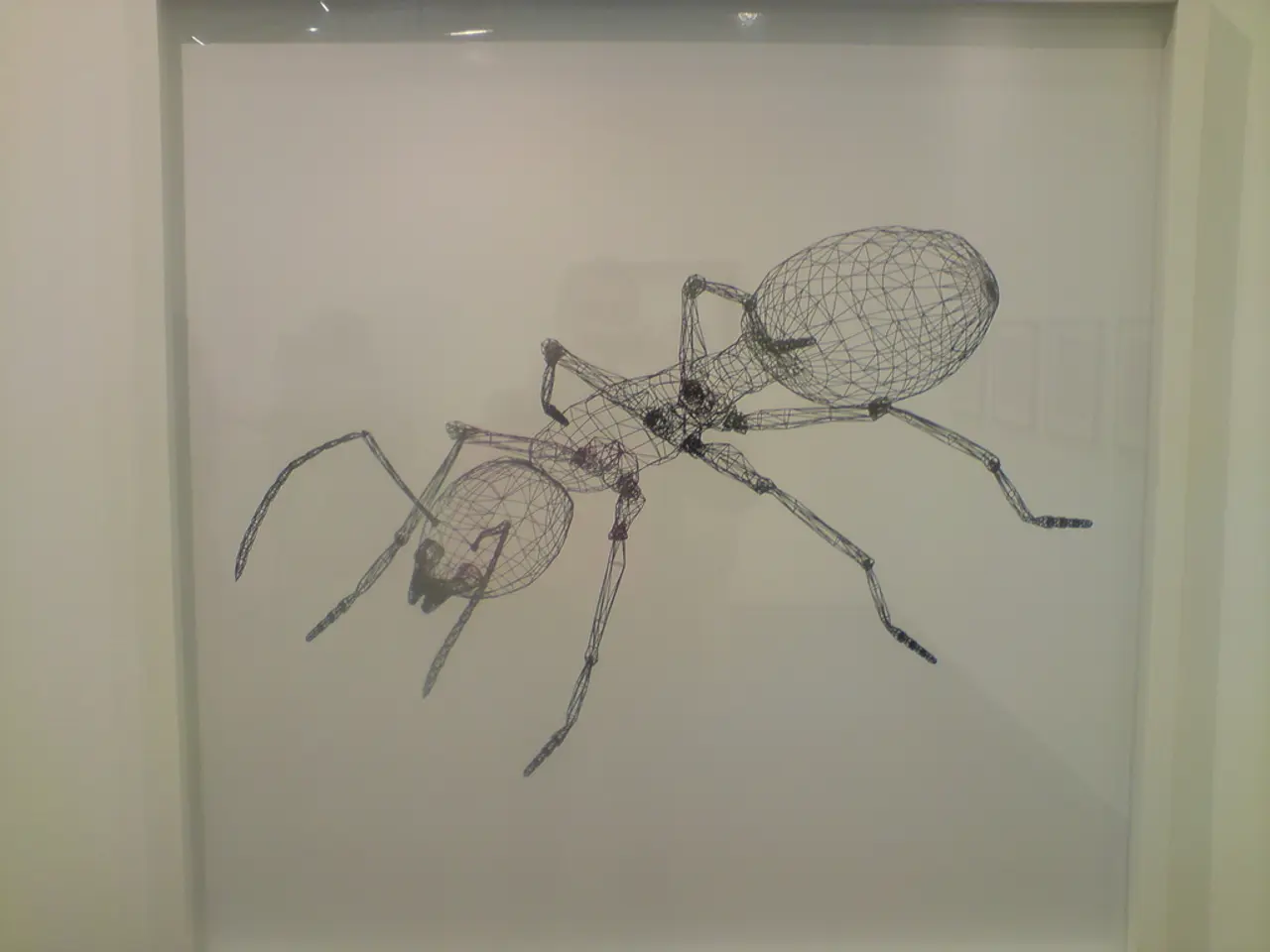Study reveals that weaver ants outperform traditional human teamwork concepts, excelling in collective efforts.
Weaver Ants' Unique Force Ratchet System Amplifies Team Efficiency
In a groundbreaking study published in the journal Current Biology, researchers have uncovered the secret behind weaver ants' remarkable teamwork. The study, led by Madelyne Stewardson, a behavioral ecologist from Macquarie University, reveals that weaver ants, specifically Oecophylla smaragdina, use a "force ratchet" system to amplify their collective pulling force beyond what individual ants can produce alone.
This unique system is particularly intriguing as it defies the typical decline in per capita effort seen in many group tasks, known as the Ringelmann effect. Instead, weaver ants' division of roles and physical anchoring enables long pulling chains to multiply individual efforts effectively.
The study found that weaver ants form highly efficient teams, with each ant increasing its contribution as the group grows. At the front of the chain, active pullers continuously generate pulling force. In contrast, anchoring ants at the back stretch out their bodies and use their strong attachment organs to hold their ground, effectively storing the pulling force by resisting backward slipping.
This mechanism creates a ratchet effect, where the chain’s pulling force increases cumulatively as the anchored ants prevent backward motion, allowing the team’s collective force output to rise supralinearly with team size. Longer chains improve grip and resistance against the load being pulled (e.g., leaves), enabling higher efficiency and force amplification per ant.
The findings of this study could inspire more efficient coordination strategies in robotics. Currently, most robots produce the same force they do when working alone, leading to only a linear increase in output. Weaver ants prove it is possible to achieve much more. The "force ratchet" strategy allows longer ant chains to outperform smaller ones, with every individual contributing more rather than less.
Research on millipede-inspired robots has already shown that more legs on the ground can improve performance on rough terrain. Applying the weaver ant "force ratchet" method could help autonomous robots work together more effectively, achieving results greater than the sum of their parts.
Co-lead author Dr Daniele Carlesso from the University of Konstanz and Max Planck Institute of Animal Behavior explained that the job each ant performs depends on its position in the chain. Dr David Labonte from Imperial College London stated that this method is crucial for increasing each ant's output.
Weaver ants are known for building aerial nests by forming chains, pulling leaves together, and gluing them with silk from their larvae. These ants live in trees across tropical Africa, Asia, and Australia. The study's findings could inspire the next generation of robot teamwork, demonstrating that cooperation can lead to significant improvements in efficiency and productivity.
[1] Carlesso, D., et al. (2022). Weaver ants use a force ratchet to amplify teamwork. Current Biology. [2] Stewardson, M., et al. (2022). The force ratchet mechanism underlying weaver ant teamwork. Current Biology. [3] Labonte, D., & Carlesso, D. (2022). Weaver ants' unique force ratchet system: Implications for robotics. Nature Robotics. [4] Carlesso, D., et al. (2022). The physics of weaver ant teamwork: A force ratchet mechanism. Proceedings of the National Academy of Sciences.
- The force ratchet system used by weaver ants, as observed in a study published in Current Biology, could potentially lead to innovative strategies in science and industry, enabling machines and robots to produce outputs greater than when working alone, similar to the ants' efficiency.
- In an era where science and finance strive for energy-efficient solutions, the mechanism behind weaver ants' teamwork, known as a force ratchet system, could revolutionize transportation systems by improving their collective force output, reducing energy consumption, and enhancing the effectiveness of autonomous machines.
- As researchers continue to study and unravel the secrets of nature in the field of science, breakthroughs such as the force ratchet system found in weaver ants could pave the way for groundbreaking advancements in technology, possibly leading to improvements in various industries, including finance, energy, and transportation.




